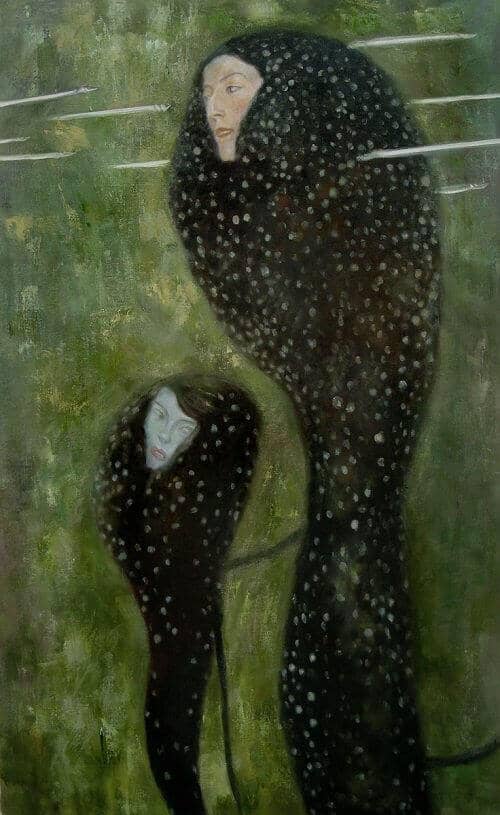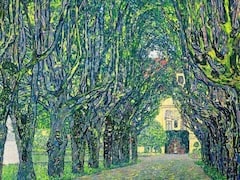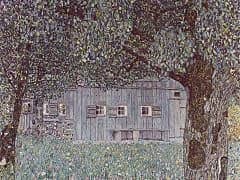Mermaids, 1899 by Gustav Klimt

Like Flowing Water, Mermaids is another work dwelling on the sensuality of water and the female body. Mermaids looks forward to one of the Faculty
Paintings, Jurisprudence, on which he began work the following year. The sheath-like nature of the female figures' hair and the surprisingly phallic outline of their bodies are strikingly similar.
Furthermore, even the colouring must have been broadly comparable. Since the Faculty Paintings were destroyed in a fire in 1945, we have only the notes of the contemporary art critic Ludwig Hevesi to
tell us that 'black and gold predominate in Jurisprudence'. The rather menacing, predatory nature of these mermaids, with their strongly emphasized eyes, brows and mouths, suggests that they are to be
viewed as sirens or femmes fatales. The male voyeur present in Flowing Water has - perhaps wisely - gone away.
Hair forms an erotic element in nearly all of Klimt's paintings of women, with heavy tresses concealing or revealing the body. Klimt rarely hesitated to show pubic hair, even in his 'public' commissions,
at a time when other Europeans such as the British were only just getting over their Ruskinian alarm at such detail. Flowing Water shows a clear, if fuzzy, patch of red hair. The same distinction
occurs between the drawing for Nuda Veritas and the finished work. The most shocking of all appearances of pubic hair is in Hope I, where the
combination of pregnancy and red pubic-hair outraged Viennese society.




















